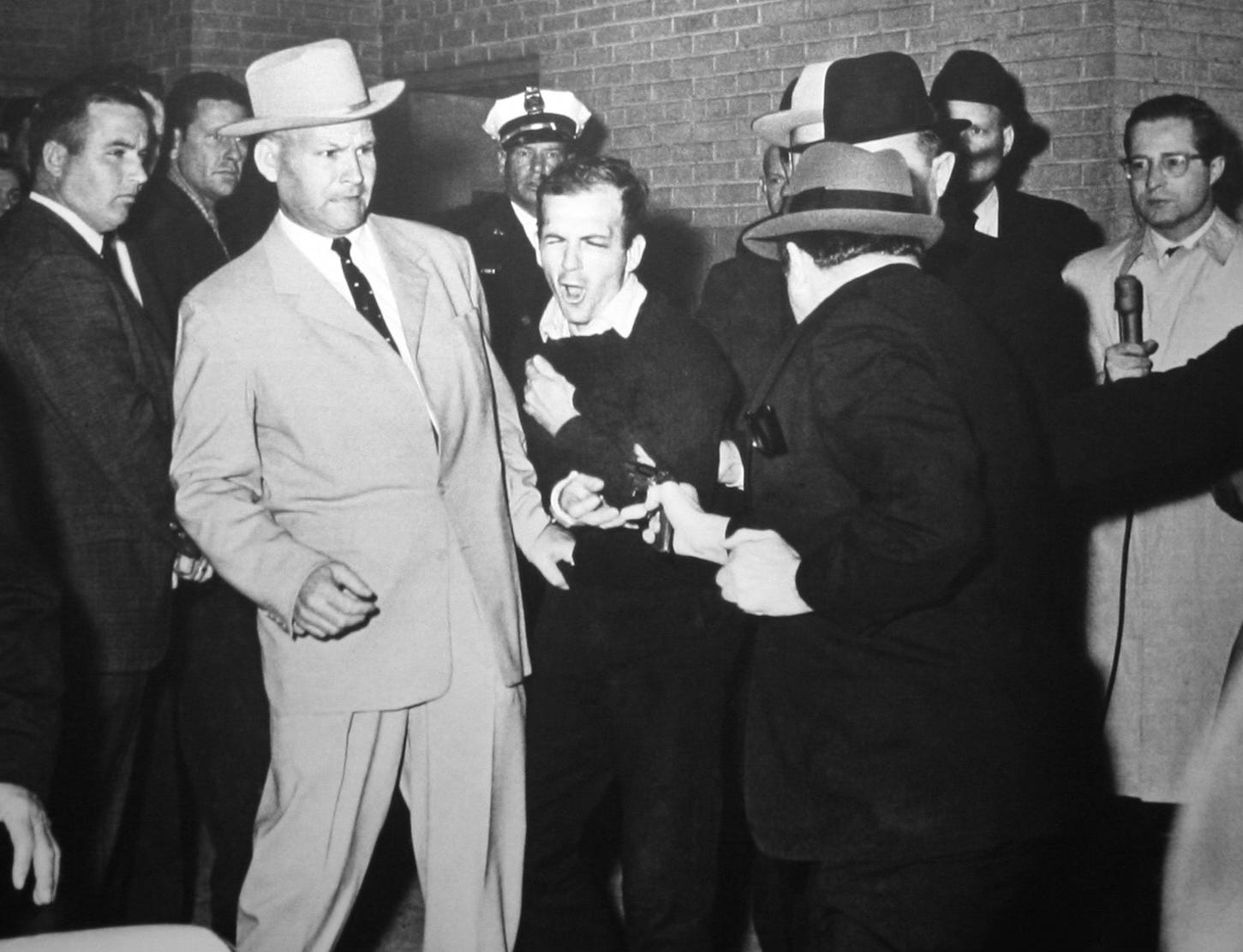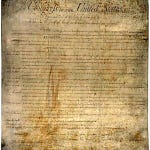This Day in Legal History: Lee Harvey Oswald Shot
On November 24, 1963, two days after President John F. Kennedy’s assassination, the nation watched in shock as Lee Harvey Oswald—the alleged assassin—was gunned down on live television. The shooter, Dallas nightclub owner Jack Ruby, entered the basement of the Dallas police headquarters and fatally shot Oswald as he was being transferred to the county jail. The killing unfolded in front of journalists, cameras, and law enforcement, searing itself into the American consciousness and further fueling public distrust in official accounts of the assassination.
Though Ruby claimed his act was motivated by grief and a desire to spare Jacqueline Kennedy the ordeal of a trial, his actions raised immediate concerns about the adequacy of security in high-profile cases. Oswald’s death eliminated any opportunity for a public trial, which would have offered a transparent legal accounting of the events in Dallas. Ruby was later convicted of murder, though his conviction was overturned on appeal before he died of cancer in 1967.
The legal ramifications of Oswald’s televised murder were broad and lasting. It led to reforms in detainee protection, prompted scrutiny over media access in sensitive law enforcement operations, and spotlighted the vulnerability of chain of custody and judicial process in emotionally charged cases. The event also highlighted the need for careful separation between law enforcement procedures and the media spectacle surrounding them. Ruby’s case prompted legal scholars to revisit the balance between a defendant’s right to a fair trial and the public’s right to observe proceedings.
This legal flashpoint helped set the stage for subsequent debates about pretrial publicity, venue changes, and judicial instructions to mitigate media influence on juries. It also foreshadowed a new era where courtroom access and high-profile criminal justice collided in an age of mass media.
The U.S. Court of Appeals for the D.C. Circuit will hear arguments in a press freedom case between the Associated Press (AP) and President Donald Trump’s administration. The case centers on whether the White House violated constitutional protections by restricting AP’s access to presidential events after the agency refused to adopt Trump’s preferred term “Gulf of America” instead of the long-recognized “Gulf of Mexico.”
In April, a federal judge—appointed by Trump—granted a preliminary injunction in AP’s favor, requiring the administration to restore the agency’s full access. However, the appeals court later paused that ruling while it considers the government’s challenge. The Trump administration argues that news organizations do not have a constitutional right to “special access” to areas like the Oval Office.
AP’s lawsuit, filed in February, claims the restrictions are retaliatory and violate the First and Fifth Amendments. The case has drawn attention for its potential implications beyond journalism, touching on the broader question of whether the government can punish speech that conflicts with its messaging. The administration has defended its actions as part of a general press policy rather than targeted retaliation.
The conflict escalated after Trump signed an executive order to rename the Gulf, which AP chose not to adopt due to its editorial standards. The White House then limited the agency’s access and removed AP and Reuters from the regular press pool. AP has framed the case as critical to preventing government coercion of the press.
US appeals court to rule if Trump can ban AP from Oval Office | Reuters
Newly unsealed court filings allege that Meta Platforms shut down internal research after discovering evidence that Facebook use caused measurable harm to users’ mental health. In a 2020 internal study, dubbed “Project Mercury,” Meta partnered with Nielsen to examine the effects of Facebook deactivation. Users who left the platform for a week reported lower levels of depression, anxiety, loneliness, and social comparison—results the company allegedly found troubling enough to halt further study and dismiss as tainted by public bias.
Despite internal acknowledgment that the findings were valid, Meta did not publish the results and later told Congress it could not quantify harm from its products. The lawsuit—filed by U.S. school districts against Meta, TikTok, Snapchat, and Google—claims the platforms concealed known risks from users, parents, and educators. Plaintiffs also allege that Meta’s safety features were deliberately underdeveloped, and that high thresholds for user removal allowed exploitative behavior to persist unchecked.
Among the more serious accusations: Meta allegedly deprioritized child safety concerns in favor of platform growth, suppressed internal safety testing, and allowed human trafficking accounts to remain active until repeated violations were flagged—up to 17 times. Plaintiffs say Meta and other companies also tried to buy favorable public positioning by sponsoring child advocacy groups, such as TikTok’s internal brag about its influence over the National PTA.
Meta has denied the allegations, calling them misleading and based on selective quotes. The company says it has robust teen safety measures and that accounts involved in trafficking are now removed upon first report. A hearing on the matter is scheduled for January in federal court.
Meta buried ‘causal’ evidence of social media harm, US court filings allege | Reuters
The Trump administration is moving forward with plans to dismantle the U.S. Department of Education and relocate its functions across six other federal agencies, including Labor and Health and Human Services. According to multiple sources familiar with the effort, senior officials and department directors have been required to sign non-disclosure agreements (NDAs), an uncommon move for a civilian agency without a national security mandate. These agreements are reportedly being used to limit information sharing as the reorganization proceeds behind closed doors.
Education Secretary Linda McMahon announced the restructuring this week, framing it as a way to “end federal micromanagement” while still supporting education through other agencies. Some staff have already transitioned to new posts, and more are expected to relocate by January. However, specifics on the timeline and scope of the overhaul remain vague, even to congressional oversight committees and education advocates.
Critics argue the administration is sidelining Congress and the public in what they call an opaque and potentially destabilizing shift. Senator Patty Murray called the effort “sabotage,” citing the lack of transparency and collaboration. Meanwhile, McMahon has reportedly met with lawmakers and urged Congress to formalize the changes through legislation, though no formal bill has yet been introduced.
In a deep-dive investigation, FOIAball uncovered how UCLA Athletics appears to have routed large sums of money intended for football player NIL (Name, Image, and Likeness) deals through a tax-exempt charity—Shelter 37, run by the co-founder of the school’s official NIL collective, Bruins for Life. This maneuver may have allowed donors to receive tax deductions for contributions that ultimately compensated athletes, despite recent IRS rulings stating such collectives do not qualify for charitable status.
Emails obtained through public records show that UCLA development staff actively coached donors to send checks to Shelter 37 while explicitly designating those funds for Bruins for Life, the school’s NIL program. These emails often discussed timing, amounts, and communication with the charity’s leadership to ensure the money was redirected as intended. In several cases, UCLA staff reassured donors that contributions through donor-advised funds (DAFs)—normally restricted from supporting private benefit—could be routed to Shelter 37 and still benefit athletes.
After the IRS began denying charitable status to NIL collectives in 2023 due to private benefit concerns, most programs shifted to non-deductible donations. But UCLA’s workaround relied on Shelter 37’s 501(c)(3) status to continue offering donors deductions, despite Shelter 37’s own filings showing the vast majority of its funds in 2024—$3.6 million of $4.8 million—were raised for UCLA football NIL purposes. By contrast, it spent only $200 on scholarships for at-risk youth, its purported mission.
Legal experts, including yours truly, told FOIAball that this could constitute fraudulent behavior, noting that charities must exercise control over their funds and serve the public interest—not act as pass-throughs for private benefit. UCLA officials, when asked for comment, did not address the specifics. Meanwhile, Shelter 37’s president denied improper coordination but acknowledged the charity paid players to appear at events, an arrangement experts say still violates nonprofit law if the real intent is athlete compensation.












